In the city of Ouidah, Benin, can be found multiple artefacts, sites and statues related to the slave trade in Africa. That is because the city of Ouidah was at the end of the slave trail of Benin and an important hub for this sinister trade. Slavery was rampant in West Africa and a lot of the slaves were being sold to feed the needs of Europeans entrepreneurs in the colonies of the Americas such as Haiti. Nowadays, tourists from around the world but also descendants of slaves come to Ouidah, Benin to be educated about slavery and it is possible to walk along the 4 kilometres Benin slave trail from the center of the city to the sea, where slaves were packed on galions to be shipped to colonies and never come back to their native lands.
While a lot of projects have started to commemorate the victims of the slave trade and are ongoing, such as the creation of two museums and the restoration of slave forts, it is already incredibly interesting to walk the slave trail of Ouidah.
Slavery in Benin
In the days of slavery in Benin, warring tribal kings would organise raiding parties to attack rival tribes and catch strong men and women to sell them to Europeans. Slavery was already a thing in Africa before the arrival of colonists but it is with their arrival that it was turned into an industry. The kingdom of Dahomey was the most powerful kingdom in the land that would become later on Benin and using its supremacy in war built its fortune selling slaves. It is the Kingdom of Dahomey that also owned Ouidah, the most important slave port around, and would allow other kings to come and sell slaves to European merchants as long as they paid taxes. Hundreds of thousands of human beings were sold into slavery here in Ouidah
The Chacha square
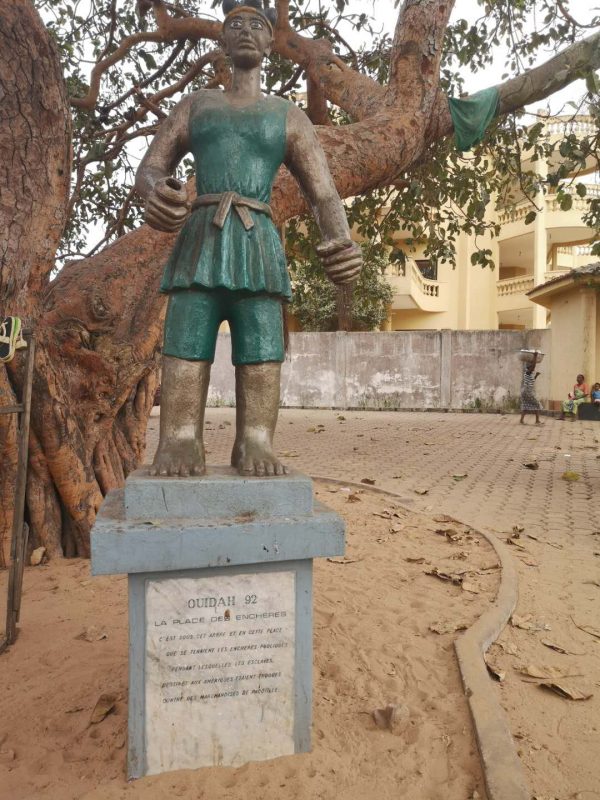
The sale and auction of slaves was happening on a main square in Ouidah. It is here that the kings would meet European merchants from the Netherlands, Denmark, United-Kingdom, France and Portugal to sell their captives to the highest bidder. Each European country dealing in slaves had its fort in Ouidah where the merchants would keep slaves like stock until the arrival of boats. One such merchant, Francisco de Sousa grew to be extremely successful and was frequently seen on the square rushing his staff and the slaves as they went about with their trade. The interjunction for “quickly, quickly” in Portuguese being “cha! cha! cha!”, the slaver was nicknamed Chacha and the square, which he lived right in front of, was named after him.
To this day, the figure of Chacha is a controversial one in Ouidah with many of his descendants still living here. For some, Fernando de Sousa was the driving force behind the modernization of Ouidah albeit to facilitate his slave trade, for others, he was an evil made trading flesh and blood and should be striped away from history. Many statues commemorating the slaver can still be found around town.
The tree of forgetfulness
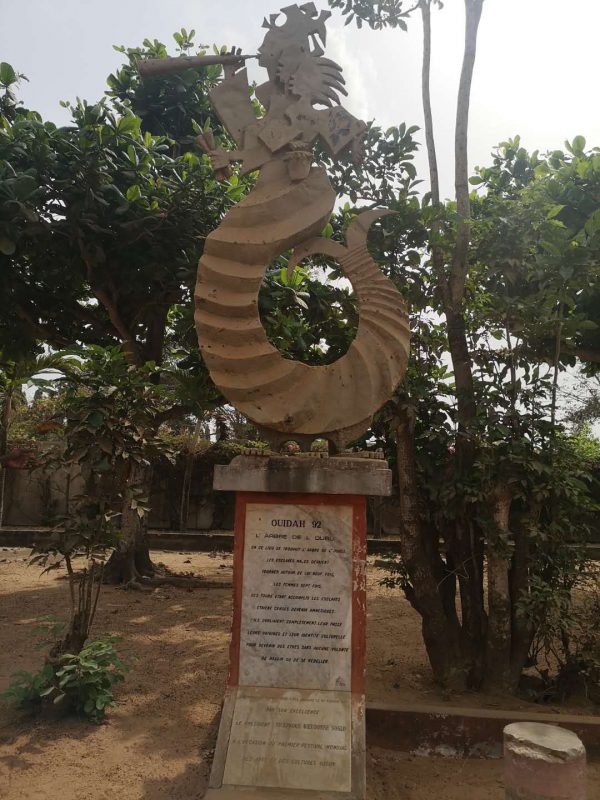
The Dahomey kings were known to employ magic to help their trades and as such, along the slave trails were left different elements given supernatural powers to help them in their evil business. The first stop along the slave trail of Ouidah contains such an element. Europeans desired slaves whose memory would be wiped clean of any remembrance of their culture, family and homeland. The kings were afraid that, if slaves knew were they came from, they would be able to flee and come back to their lands so a magical tree was used to allegedly make them forget all of that. Men were asked to turn around the tree nine times and women seven, after which it was said the magic of the tree would make them forget all their ties to the land they were pushed away from.
The case of Zomai
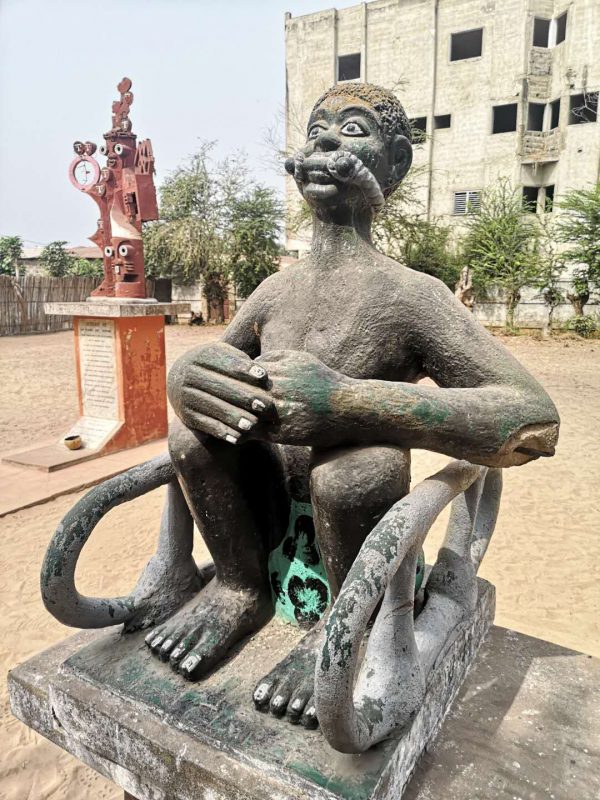
The case, or house of Zomai, is the emplacement where a tiny house was. In this house, without windows or light, hundred of slaves were squeezed and kept here for two weeks. Slaves were fed once a day and not allowed out, even to relieve themselves. The goal of imprisoning them there for a while was to disorient them as they would spend days without light and would then not know how to escape once they were pushed out. It was forbidden for slaves to speak and those who were caught doing so were promptly gagged. Before their stay in the case of Zomai, it was made sure that prisoners with any link, such as people from the same family, friends or even people from the same village or tribe were divided. Many prisoners died of the horrid conditions in which they were kept. Those victims were then thrown in a mass grave nearby.
The mass grave
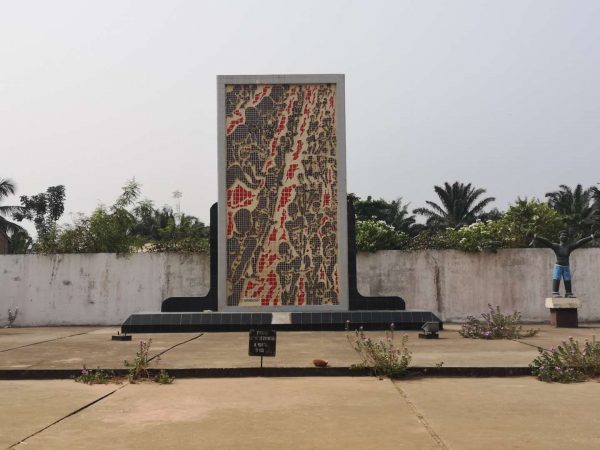
Over the mass grave can be found a memorial to the victims who passed away here. The monument represent rows of slaves who are progressively stacked tighter and tighter.
The tree of return
Next to the grave is a tree that kings planted to protect themselves. The kings of Dahomey were afraid that slaves who died at sea or in foreign land would turn into spirit and roam the world, seeking vengeance. The tree, upon which rituals were made, was supposed to act as an anchor for returning spirits, making sure they would not find the king or his family in their vengeful roaming and find peace in their land.
The door of no-return
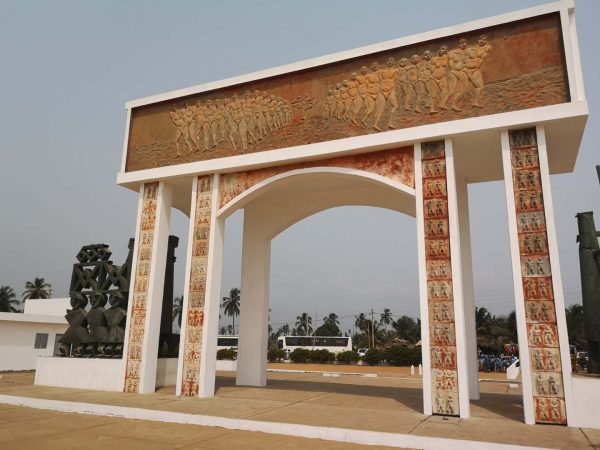
At the end of the road, by the beach, is a monument called the door of no-return. The door of no-return, built in 1993, is a monument commemorating the last step of the trail of slavery, that is, when slaves would reach the beach and be packed in galions, to be sent out and never return alive. While descendants of black slaves have come back to Ouidah and Benin to retrace their origins, absolutely no slaves of the first generation have made it back to their land once sent away from the beach.





